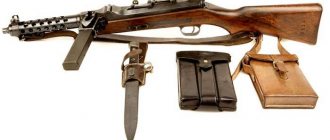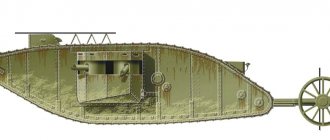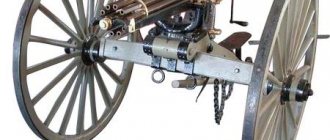| - scourge; whip - French . discipline Fouet De cocher ou de postillon. Forcet Fouet. [ghhe] In many cults, the flagellation ceremony had the meaning of enhancing fertility - a kind of spell for the future harvest. Images and sculptures of gods were also whipped with whips in order to obtain their help, thus, as it were, enhancing their potency. In ancient times (among peoples at a primitive level of development), flagellation was one of the ritual actions that contributed to purification and increased fertility. It was believed that beatings with a whip stimulated fertility and not only in men. The symbolism of the whip is a mixture of the symbolism of the knot (or bow) and the scepter; both are signs of dominance, dominion and superiority. Expresses the idea of punishment, like a club or club - as opposed to the sword as a symbol of purification - as well as the ability to encircle and suppress[1]. Logically, the whip should also be correlated with flagellation (or fertility) rituals[2]. In addition, she is an attribute of the Intimidating Mother[3]. Basic values:
Together with a staff, it symbolizes cattle breeding and agriculture. | See also: Staff Flagellation Flagellation of Christ |
Egypt
Symbol of fertility.
The so-called whip (neheh in Egyptian) consists of a short handle with two or three hanging strips or strings of pearls. It was interpreted as a shepherd's whip, which became a sign of power through the god Anezti, "Head of the Eastern Nomes." Another original meaning of the whip was a fan from flies. The whip is a constant attribute of the gods Osiris and Min. Already in the Ancient Kingdom, it was located on the backs of animals consecrated by the gods. The whip, as a symbol of power, also serves kings.
In Egypt, the whip, thanks to its morphological associations with lightning, was an attribute of Min, the deity of the wind, as well as some deities in general who control storms[4].
Egyptian pharaohs used the whip as an emblem of power.
Attribute:
- Osiris as judge of the dead;
- the god of the wind Mina, who in itself was a symbol of the power of Nature, and at the same time the power of the pharaoh.
Menat drives away evil spirits with the help of a whip, which becomes a symbol of happiness.
Notes[edit]
- ^ab One or more of the preceding sentences incorporates text from a publication now in the public domain: Chisholm, Hugh, ed. (1911). "scourge". Encyclopedia Britannica
(11th ed.). Cambridge University Press. - "Staff and Flail in Ancient Egypt". turegypt. Retrieved July 25, 2013.
- Budge, Wallis (1971). Egyptian magic. Dover. paragraph 72. ISBN 0486226816.
- ^ a b c d Tierney 1909.
- ↑
John 19:1 - Tierney 1909 leads Historia Lausiaca
VI - Tierney 1909 cites Socrates Hist.
Eccl. , IV, xxiii - ↑
Tierney 1909 quoting
Patrologia Latina
, LXVII, 1111 - Tierney 1909 cites Patrologia Latina
, LXVIII, 392, 401-02 - ↑
Tierney 1909 citing Hefele, Concilieng., II, 594, 656 - Tierney 1909 quotes St. Columba in Regula Cœnobialis, c. x, in Patrologia Latina
, LXXX, 215 sq.
for the later centuries of the early Middle Ages, see Louis Thomassin, Vetus ac nova ecclesiae disciplina
, II (3), 107; Du Cange, “Glossar. Med. Et infom. Latinit.”, Sv “Disciplina”; Grätzer, “De spontaneâ disclinarum seu flagellorum cruce libri tres” (Ingolstadt, 1603); Franz Quirin von Kober, "Die körperliche Züchtigung als kirchliches Strafmittel gegen Cleriker und Mönche" on tube. "Quartalschrift" (1875). - Tierney 1909 quotes Patrologia Latina
, CXLIV, 1017; surname means "attached"
Antiquity
Oracle. Bronze whips figured in the cult of Zeus in Dodona[5]. When a whip was waved in the sanctuary over the image of a god in the form of a child, the priest interpreted the sound it made as a command from Zeus.
Attribute:
- Apollo,
- Dionysus,
- Cybele,
- Hecates,
- Erinny (symbol of vengeance, punishment),
- Dioscuri
- Bellona - Roman goddess of war (essential)
- the Greek Nemesis (Nemesis) and the Roman Fortuna had whips and belts for ritual fruit-bearing flagellation.
Brides in Rome were lashed. During Lupercalia, naked young men from patrician families ran through the streets and flogged all passing women with olive branches to increase their fertility. Fruit and nut trees were scourged for the same purpose.
Don’t forget to catch up with Calpurnia in that race, for we are commanded by our elders to subject barren brides to a curse, but if you manage to catch up and whip, then the curse will be lifted. W. Shakespeare "Julius Caesar"
The chariots of triumphant generals in Rome were decorated with whips[2].
In ancient Rome, incorrigible debtors were flogged.
Either a whip or a flail
Please note: some flails are designed to “wrap” the enemy, immobilizing him, just like using a bolo. Impact role - in the background
Old Russian flails are often discovered during archaeological excavations, sometimes appear in chronicles as military or “urban” weapons, but we actually don’t see them in chronicle miniatures. Only in the Radziwill Chronicle, a white version of which was made already at the end of the Russian Middle Ages, are there two “ freeze frame,” and in both cases the role of the flail there is ignoble: it serves for extrajudicial murder.
One of these flails, the “civilian” one, comes from a mace, and the second is akin to a horseman’s whip, but is in the hands of a warrior. It’s just that the one in the picture is not busy with war: after a successful raid on feudal competitors, the prince’s warriors steal cattle and take the girls in full, and the men who tried to object to this are pointedly beaten to death with flails.
Starting from the first quarter of the 16th century, the connecting part of some flails, while maintaining a noticeable length, received a deliberate limitation in flexibility. Sometimes this is done through a thick belt weave or, in the case of a chain, the use of large twisted links, but more sophisticated solutions are also known, when the design of the chain takes on a resemblance to... a bicycle! As a result, it gains the ability to bend in one plane and also works as a rigid rod.
Actually, the light did not converge like a wedge on Novgorod and Zaporozhye. Until the beginning of the twentieth century, the outcome of wall battles between neighboring villages, urban settlements, or “corporations” of boatmen and longshoremen influenced the trading “rating” of a particular company to such an extent that it directly affected financial matters. And so much so that for a favorable outcome it was possible to hide the brush in one’s sleeve. Or both. Or even turn the sleeve itself into a flail by sewing a lead weight into its end.
Various types of flails. On the right is the already familiar Kettenmorgenstern. But the double flail on the left (India) and the flail with a flexible leather part (Russia) are more likely to be combat whips
"Line Cossack" Drawing from Fyodor Pauli’s album “Peoples of Russia”. The Cossack has a whip hanging from his right hand, which could be used to urge a horse and against an opponent in battle.
Of course, usually the hand still exists separately from the sleeve. We will move on to shaftless options. Those that can be called flails in the narrow sense of the word: a belt cord, looped around the wrist. In the Russian tradition, such a thing is usually called “extinguishing”. And here is how the famous linguist Vladimir Dal described this weapon: “A flying flail, a weight on a belt that is wound, circling, on the hand and develops in a big way; they fought with two flails and a hoop, releasing them, circling them, striking and picking them up one by one; there was no hand-to-hand attack against such a fighter.”
This is exactly how they fight in “Slaying Steel” by the Lukins and in “The Many-Armed God of Dalain” by Loginov - only in Loginov they use a flail as an inertial weapon and directly attack the enemy weapon or, more broadly, the entire armed hand, combining a blow with entanglement. This also happened: if not in Rus' (quite possibly there, too, but the data has not been preserved), then in Germany, Italy, Ireland, both with a single extinguisher and with multi-tailed whips. But, as a rule, not in close combat; and the “shock” combat whip is applicable in at least a thin formation.
The technique of working with a handleless striker reaches maximum perfection in the East. Of course, everyone immediately remembers the Yakuza schoolgirl and her tigiriki brush from Kill Bill. In reality, the kernel was smaller, and several times smaller, and a steel chain of such a length is too exclusive a product even for samurai technology, but a strong cord five meters long, and in exceptional cases ten, could exist.
The Swedish historian Olaus Magnus, in one of the illustrations for his “History of the Northern Peoples” (1555), shows a raid by robbers on a fishing village and an attempt at resistance, during which one of the fishermen uses a large flail in a very special way - as an overpowering weapon, and with the impact of not even on the arm, and on the leg. This drawing, of course, is far from photographic accuracy, but it reflects the essential realities of the 16th century. The striker in this case is not studded, instead of a chain, perhaps not even a belt, but a rope, approximately equal in length to the handle. Perhaps this is partly a “boat” weapon (according to Genoese and Venetian sources it is known that various combat flails were among ship ammunition). But why do you need to entangle the leg, and not the armed hand, and not hit the head or body? Apparently, there was no other choice: the spears in the hands of the attackers did not allow a counterattack at the upper or middle level.
Officer's Cossack whip of the 19th century - more ceremonial than “working”
In Muscovite Rus' at that time, the military flail was primarily a weapon for equestrians (and in case of forced dismounting), and a hand-held weapon. It didn’t extinguish, but a typical bassalyk. The striker is already slightly larger than that typical for a universal “whip-whip”, but it is still a combat scourge. The connection to the handle is a belt, and spikes are usually planted at the place of this connection - specifically to prevent the enemy from intercepting the weapon in close combat. It was worn in combat conditions, as a rule, in the back behind an unhurried belt, snatched, apparently, from behind the back, but from the side, and not over the shoulder.
It is interesting to compare this style of wearing with the European one. If a modern weapon has a carrying belt included in a single set, then in medieval Europe such belts - be it a belt, a sword belt or parts of a horse harness - existed separately, and weapons like a flail, a mace or a small (equestrian) war hammer were not worn as much behind the belt as on the belt, attached to it with special hooks - like a fountain pen in the breast pocket. Depending on the situation, it was possible to attach the weapon either to the saddle, or to the belt, or closer to the shoulder - and release it from the fastening in one movement.
On the battlefield, such flails ceased to be used already at the beginning of Peter’s glorious deeds. But the history of the archaic whip-flail as an auxiliary but combat weapon of the Russian cavalry (though mainly of irregular formations: Cossack, Tatar, Kalmyk) lasted much longer, not ending even in 1812.
The mainspring is a modern analogue of the combat whip. Long springs with a handle made of leather windings are often used in street fights
Christianity
One of the symbols of the passion of the Lord (the suffering of Christ), often depicted together with the column (pillar) to which Jesus was tied. (See Instruments of the Passion, Flagellation of Christ)
In the scene of the Cleansing of the Temple, Christ waves a whip, driving out the money changers.
In early Christian communities, disobedient church ministers were flogged with whips. From the 4th century Self-flagellation is spreading as an act and demonstration of repentance. Later, in the 12th-14th centuries, this practice marked the beginning of the religious brotherhood of flagellants (that is, flagellants), whose indispensable attribute is the whip.
The whip in the hands of a saint, as a rule, serves as a symbol of repentance, mortification and discipline (< from lat.
names of the scourge).
The scourge or whip has as its attribute:
- Bibliana, St.;
- Philomena, St.;
- Julia, St.;
- Gervasius, St. - a pair of saints: one with a whip, the other with a sword - Gervasius and Protasius;
- Karpophorus, St.;
- Severian, St.;
- Severus and Victorius, St.;
- App. Lawrence and Andrew (in the sculptural images of the holy apostles the scourge with which they were flogged before execution always appears);
- St. Ambrose - a whip with three tails or knots as a reminder of the expulsion (scourging) of the Arians from Italy;
- Mary Magdalene, St. - sometimes, penitent;
- Vincent of Saragossa, St.;
- Agrippina Sibyl.
The scourge is often considered as a talisman against physical and mental ailments. Flagellation is one of the methods of exorcism or driving out demons (the devil) from a possessed person.
Ad vocem
There is, they say, a whip against him. “It only works under the whip.” “The fat Sarmatian did not send his children to the big world for their education; for pedagogical purposes he had a whip” A. Narushevich “Get a whip” - to be beaten, “Pour a whip” - to beat. “Make a whip out of sand” - trying to make something out of nothing, doing a stupid, empty thing. “A false word, mockery is worse than a whip” S. Zheromski
Proverbs:
“Trouble is where there is no whip”, “You can’t defeat hunger with a whip” (proverbs).
Scourge of Homer (Greek: Homeromastyx) - philologist Zoilus, an evil and envious critic of antiquity, who reviled Homer, Plato, Isocrates and many others. etc. The name has become synonymous with bias in literary criticism.
The Scourge of God (lat. flagellum Dei) is the Christian name for the pagan conquerors and rulers who led the invasions, subjected Christian countries and peoples to cruel violence, destroyed and tortured people:
- Atilla - King of the Huns,
- Genseric - ruler of the Vandals;
- Timur (Tamerlane) - during the Middle Ages.
The scourge of Christians - Nur-Al-Din (1118-74) - Muslim ruler of Aleppo and Mosul (Syria).
Book Scourge - Pietro Aretino (1492-1556) - Italian writer











